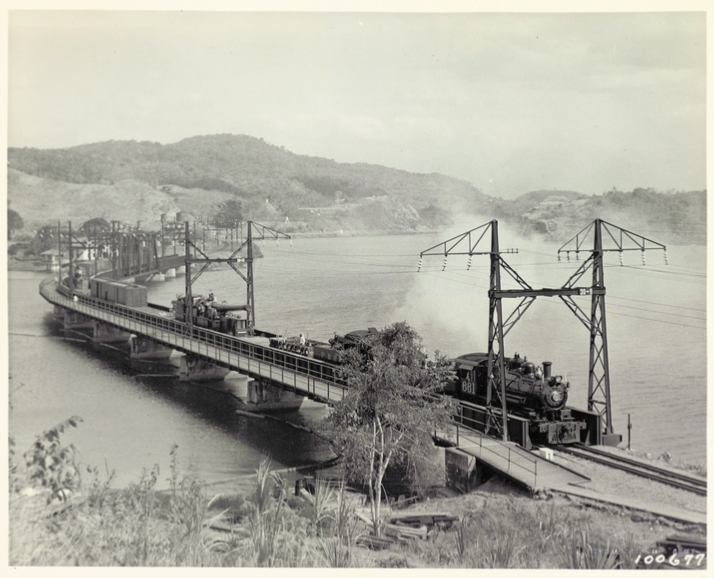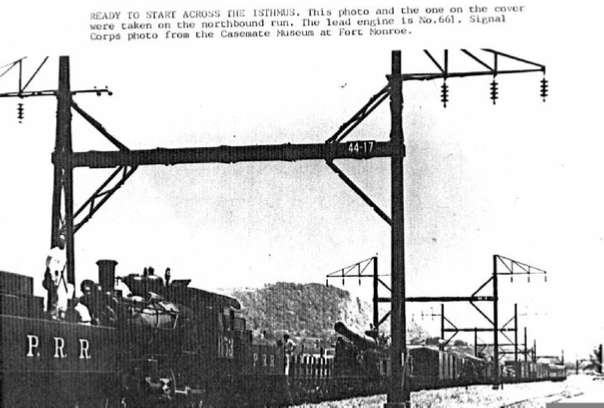

|
Principle Dimensions |
|
|
Class |
651- |
|
Locobase ID |
6425 |
|
Railroad |
Isthmian Canal Commission/Panama |
|
Country |
USA |
|
Whyte |
36562 |
|
Number in Class |
20 |
|
Road Numbers |
601- |
|
Gauge |
5' |
|
Number Built |
20 |
|
Builder |
Alco- |
|
Year |
1906 |
|
Valve Gear |
Stephenson |
|
Locomotive Length and Weight |
|
|
Driver Wheelbase |
14.50 / 4.42 |
|
Engine Wheelbase |
22.67 / 6.91 |
|
Ratio of driving wheelbase to overall engine wheelbase |
0.64 |
|
Overall Wheelbase (engine & tender) |
54.75 / 16.69 |
|
Axle Loading (Maximum Weight per Axle) (lbs / kg) |
|
|
Weight on Drivers |
127,500 / 57,833 |
|
Engine Weight |
147,500 / 66,905 |
|
Tender Loaded Weight (lbs / kg) |
88,000 / 39,916 |
|
Total Engine and Tender Weight |
235,500 / 106,821 |
|
Tender Water Capacity (gals / ML) |
4000 / 15.15 |
|
Tender Fuel Capacity (oil/coal) |
45814 |
|
Minimum weight of rail (calculated) |
71 / 35.50 |
|
Geometry Relating to Tractive Effort |
|
|
Driver Diameter |
63/1 |
|
Boiler Pressure |
180 |
|
High Pressure Cylinders (dia x stroke) (in / mm) |
20" x 26" / 508x660 |
|
Tractive Effort |
25,257 / 11456.40 |
|
Factor of Adhesion (Weight on Drivers / Tractive Effort) |
5.05 |
|
Heating Ability |
|
|
Tubes (number - |
316 - |
|
Flues (number - |
? |
|
Flue/Tube length |
12.27 / 3.74 |
|
Firebox Area |
174 / 16.16 |
|
Grate Area |
31 / 2.88 |
|
Evaporative Heating Surface (sq ft / m2) |
2203 / 204.66 |
|
Superheating Surface (sq ft / m2) |
? |
|
Combined Heating Surface (sq ft / m2) |
2203 / 204.66 |
|
Evaporative Heating Surface/Cylinder Volume |
233.12 |
|
Computations Relating to Power Output |
|
|
Robert LeMassena's Power Computation |
5580/1 |
|
Same as above plus superheater percentage |
5580 |
|
Same as above but substitute firebox area for grate area |
31320 |
|
Power L1 |
6146 |
|
Power MT |
318.81 |
|
Factor of Adhesion (Weight on Drivers / Tractive Effort) |
4.91 |



| Guns & Cannon |
| Howitzers |
| Mortars |
| Flak |
| Cannon Wagons |
| ICBM |
| Locomotives |
| Rolling Stock |
| Armored Trains |
| Draisine |
| Narrow Guage |
| Locomotives |
| Rolling Stock |
| Armoured Trains |
| Draisine, Trolley, Handcar, Armored Railcars |
| Armored Platforms & Gun Cars |
| Locomotives |
| Rolling Stock |
| Mexican–American War (1846-1848) |
| American Civil War (1861–1865) |
| Spanish–American War (1898) |
| World War I (1914–1918) |
| Russian Civil War (1917–1923) |
| World War II (1939–1945) |
| Locomotives |
| Armoured Trains |
| Locomotives |
| USATC S100 Class (0-6-0T Tank ‘Switcher’) |
| USATC S160 Class, 2-8-0 Consolidation Type Steam Locomotive |
| USATC S200 Class, 2-8-2 Mikado Type Steam Locomotive |
| The 14-inch Railway Gun and Carriage Explained |
| How To Identify U.S. 14-Inch Railway Guns |
| How To Identify U.S. 12-Inch Railway Guns |
| Guide List of Major Railway Gun Mounting Systems (U.S. Civil War – WWII) |
| Steam Locomotive Tender Designs |